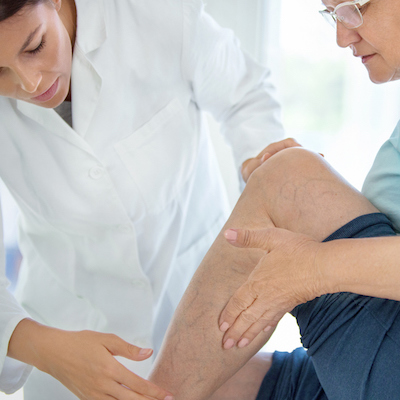The taller you are, the more likely you are to develop varicose veins, according to a study led by Stanford University School of Medicine researchers. But there are ways to prevent and treat this little-understood condition, we explain.
According to researchers who examined the genes of more than 400,000 people in search of clues to what causes this common but little-understood condition, your height may be the reason for yourvaricose veins.
“Genes that predict a person’s height may be at the root of this link between height and varicose veins and may provide clues for treating the condition,” says Nicholas Leeper, MD, associate professor of surgery and of cardiovascular medicine at Stanford.
The study also identified 30 genes linked to varicose vein disorder and to a strong genetic correlation with deep vein thrombosis. It will be published in journal Circulation.
Varicose veins are swollen, twisted veins that can be seen just under the surface of the skin, usually in the legs. More than 30 million people in the United States have varicose veins. Although the condition is often dismissed as nothing more than a cosmetic nuisance, it can cause moderate pain and has been linked to the more serious side effects of deep vein thrombosis, which occurs when a blood clot forms in one or more of the deep veins in the body.
“We not only found an association between height and varicose veins, but the genetic studies we did showed a causal link,” says Leeper. “That suggests that the genes and pathways that drive human height are also likely to be causing varicose veins.”
“The condition is incredibly prevalent but shockingly little is known about the biology,” says medical student Alyssa Flores. “There are no medical therapies that can prevent it or reverse it once it’s there.” Treatment is mainly limited to surgical procedures, such as laser treatment or vein stripping. “We’re hoping that with this new information, we can create new therapies, as our study highlights several genes that may represent new translational targets,” she says.
“We confirmed that having had deep vein thrombosis in the past puts you at increased risk in the future,” Leeper said. “Recent research suggests that the converse appears to be true as well. Having varicose veins puts you at risk of these blood clots.”
The study also confirmed that surgery on the legs, family history, lack of movement, smoking and hormone therapy are risk factors. But the correlation they found between height and the condition was unexpected, the researchers said.
Read this for non-surgical treatments for varicose veins, plus prevention techniques.







